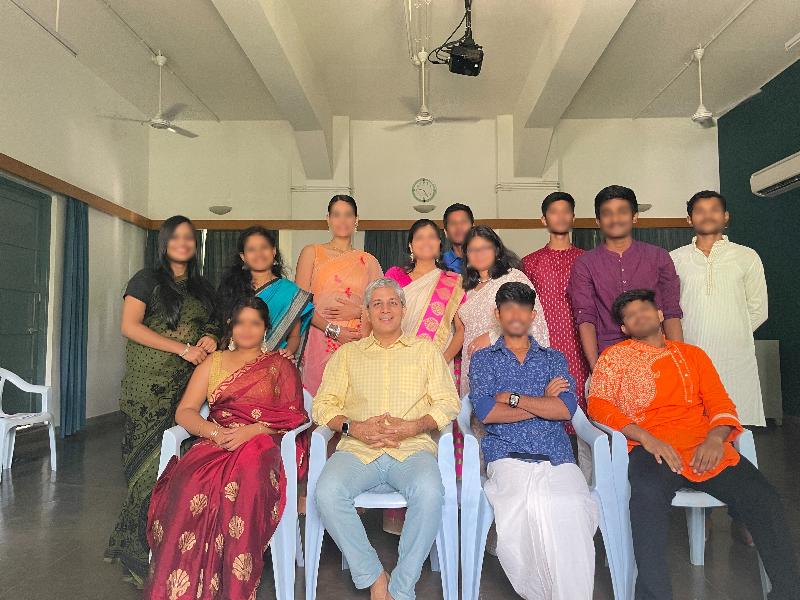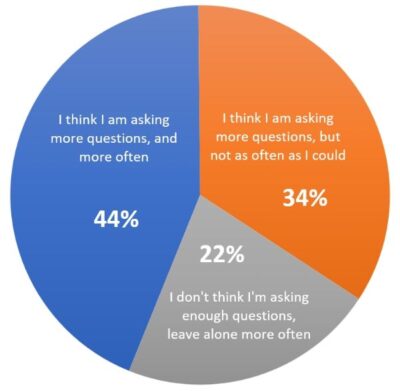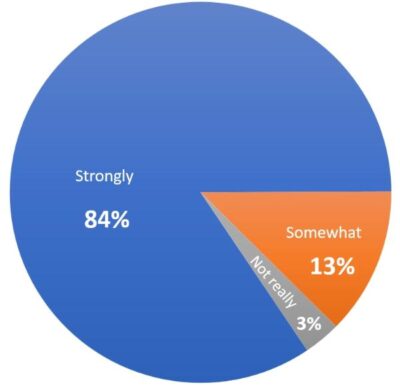Audience: 12th grade
Period: The Vedic age to the advent of the British.
Duration: 2x a week, 42 weeks*
Format: Presentations, Videos, Assigned readings, Quizzes
Class size: Varying between 12-20 students


With some of my history students, last day of our class in 2022.
I taught Indian History for 5 years at the “Ashram school” in Pondicherry, a.k.a SAICE – the Sri Aurobindo International Centre of Education. When I said ‘taught’, I meant that I first taught myself, for I had a lot to learn, and still do. I’m still a child grasping for truth.
My approach to teaching Indian history was based on the following premises:
- History, if it has to have any meaning or relevance to students, has to somehow ‘come alive’ in a classroom setting, and textbooks written with pre-defined syllabi tend to ossify ideas into dead silos.
- Most textbooks on history are dull, uninspiring and guarantee loss of interest.
- Students are a lot more comfortable with uncertainty than we think, and want to grapple with difficult ideas.
- History is a perfect subject to illustrate the limitations of human knowledge and reason. To be aware of the boundaries of our own understanding is invaluable.
- The epics are foundational to Indian history. Students (or adults, for that matter) who are unfamiliar with the national epics (the Ramayana & the Mahabharata) will likely employ a non-dharmic, non-nuanced Western lens to understand life and its ultimate aim. And life in the West currently has no aim, or if it is to be called an aim – it is quite mundane. The epics are “national structures” and itihasa itself. They reveal to us the road that man must take in his evolutionary journey – to miss this point is to miss it all. More on this, if you’re interested (~10 pages, half hour or so): Sri Aurobindo’s aphorisms on History + Historicity and Myth – a Dharmic view
- History does not “scale” well; one cannot make a system out of a course without making it less appealing to every subsequent year of students. The class has to change to suit the needs and interests of the students.
- Students ought to feel an enormous sense of pride for India, and be inspired by her incredible achievements across fields, but should also develop a sense of perspective – to see plainly what didn’t work, and why other countries did some things better. The story of India needs to unfold in parallel with the story of Egypt, the Greeks, Romans & the Chinese.
- Nurturing perspective tends to take time, and a system that needs to rush to somehow complete a curriculum will likely not value this.
I put together this course from first principles, asking myself (and the students) a whole bunch of fundamental questions.

At the end of each year, I solicited anonymous feedback from the students via Typeform / Google forms.
Student Feedback
1. IF on a scale of 1-10, your interest in history at the start of the year was previously at a number 5 (purely as a reference), where would it be at present ?

Change in Interest for the subject, before & after the course. So 5 was the baseline, anything higher would be an increase in interest. Almost all students indicated increased interest.
2. One of the objectives of the course was for you to be asking yourself more questions – about history. If you had to observe yourself now, which of the options below would be most true?
- I think I am asking more questions, and more often
- I think I am asking more questions, but not as often as I could
- I don’t think I’m asking enough questions, leave alone more often

78% (44%+34%) of students indicated they were asking more questions about history.
3. Would you recommend the course to a junior who asks you for your opinion?
